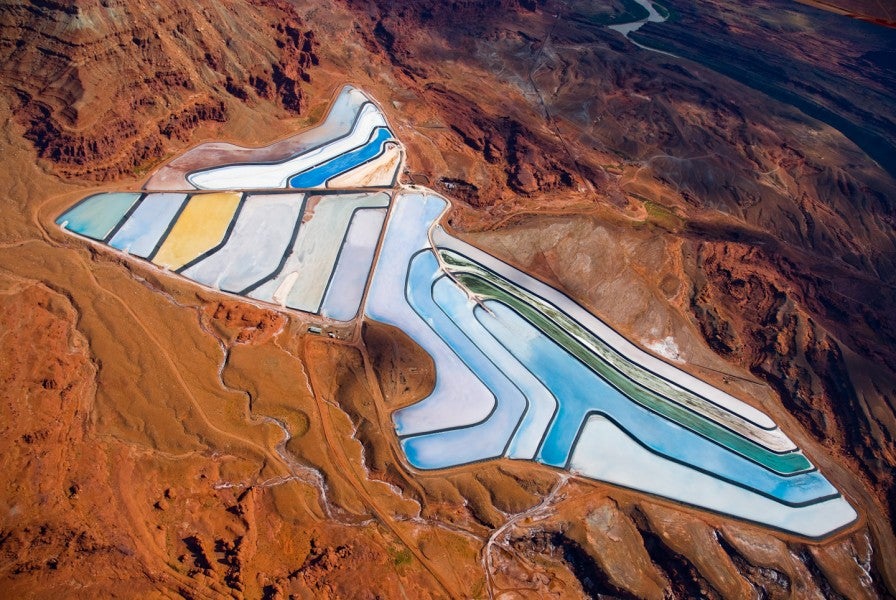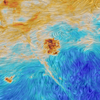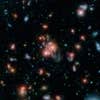Pluto Strikes a Pose
Two months after its flyby of the Pluto system, the New Horizons spacecraft started sending its data and high-resolution images back to Earth. Among the images was this majestic photo of Pluto eclipsing the sun. The version on the left has been minimally processed, while the image on the right has been processed to reveal the different layers of Pluto’s atmosphere. It will take NASA a year to transfer all of New Horizon’s photos and data.
Now You Can Order Ribs At the Hospital
A 54-year-old Spanish cancer patient recently became the world’s first person to receive a 3D-printed chest prosthetic. His custom-designed, titanium sternum and rib cage replacement was printed on a $1.3 million electron beam Arcam 3D printer. The operation was a success–just 12 days after his final surgery, the patient was discharged and has recovered well.
Looking Down At Us
Ever gaze down from an airplane and marvel at how surreal the built landscape looks? Photographer Alexander Heilner had the same thought on a flight in 2007. Now he takes aerial photos of manmade developments to capture our stamps on Earth, including this one of Intrepid Potash Mine, near Moab, Utah. “I think it’s important that our eyes are wide open, that we pay attention to how the land gets used,” he told WIRED.
Rebel Rebel
This non-conforming dolphin, aptly nicknamed “Pinky,” was spotted by charter boat captain Erik Rue in Louisiana a couple weeks ago. Pinky is an albino bottlenose dolphin whose mother was a typically-colored gray dolphin. Albino dolphins are extremely rare–the National Oceanic and Atmospheric Administration told Newsweek that they only have record of two other albino dolphins in the Gulf of Mexico.
Trippy Magnetic Fields Of Dwarf Galaxies
This image, captured by the European Space Agency’s Plack Satellite, is of the Magellanic Clouds–two of our nearest dwarf galaxy neighbors. The large dark orange blob in the center is the Large Magellanic Cloud, which is about ten billion times the mass of our sun. The triangular blob in the left corner is the Small Magellanic Cloud, which is about seven billion times the mass of our sun. At the top of the image, the yellow swirling clouds represent interstellar dust from a constellation called Chamaeleon.
A Protein Map For The Animal Kingdom
In a recent study published in Nature, researchers mapped more than one million protein interactions across nine species. They found that certain proteins that cooperate in organisms like frogs, mice, yeast and sea urchins also cooperate in humans. This protein homology graph is from the scientists’ related research on how similarities in proteins can reveal information about a species’s evolutionary ancestors.
Google’s Got Your New Wallpaper
Google is making it easy to curate your eye-candy with its new Earth View, a collection of 1,500 of “the most beautiful and striking landscapes found in Google Earth.” All of Earth View’s satellite photographs are free to download as wallpapers for your laptop, tablet or phone.
Boo! (Petrified Sand on Mars)
A panorama captured by NASA’s Curiosity Mars rover shows sand dunes that have been cemented, or petrified, into rock. The reptile-skin patterns and lines on the Martian sandstone give planetary geologists information about which way winds blew to produce the dunes.
How To Fit Central Park In Your Bedroom
Photographer Aberlardo Morell transformed this darkened room into a dreamscape by turning it into a camera obscura, a dark chamber with a pinhole on one side. When the light from an outside scene passes through the hole of a camera obscura, that image is reproduced and turned upside down. If you like what you see, check out this gallery of Morell’s work on National Geographic.
That’s One Greedy Galaxy
Astronomers recently announced that they found a giant galaxy cluster with a hungry core (the bright blob at the center of this image) that’s forming stars at breakneck speed. Their discovery is a rare one because galaxies at the centers of clusters are usually made of old or dead stars. The galaxy at the center of cluster SpARCS1049+56, however, is gobbling up gas from other galaxies and churning out stars at a rate of 800 new stars each year. To put that into perspective, the Milky Way forms two stars a year at most.










